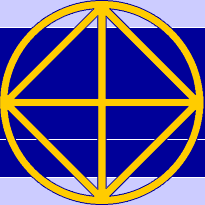Book Presentation
"Rudra"
by Dr. K. Parvathi Kumar

In the scheme of Vedic Wisdom and its related Puranas, Rudra is the Lord of Will, the Lord of Fire, who
opens the way for Creation at various levels. e is also the Lord that clears impediments to
Creation. He is also seen as the Lord who helps to path of return. Thus for entry into and exit from the world,
Rudra remains the chief helper, Guru, Teacher, Yogi.
Content: Rudra. The Lord of
Cosmic Will and Vibration; Advent of Rudra (First Logos); A Few Dimensions of Rudra; Part II: Rudra Abhishekam
(Water Ritual); Regulations And Times; The Water Ritual; Brief Explanation Relating To The Mantras Of The Seven
Steps.
New multilingual edition 2006: English / German / Spanish: € 18, ISBN: 978-3-9523145-1-7
Copies: The World Teacher Trust-Global • Büelstrasse 17 • CH-6052 Hergiswil • Switzerland
Sample:
Advent of Rudra (First Logos)In the beginning of the creation (which is a doctrine by itself) the third Logos (Brahma, the Creator) emerged. He was initiated by the Lord Absolute to create. As he thought of creation, four Kumaras came out of him. The Creator advised them to cooperate with him for creation. The Kumaras smiled and remained silent. The purpose of emergence of the Kumaras was different from what was visualised by the Creator. These Kumaras are the Sons of Will and of Yoga. About these Kumaras, Madam Blavatsky elaborately writes much in “Secret Doctrine”. Madam Alice A Bailey also described them in the book “Treatise on Cosmic Fire.” They are also referred to as Agni Shvathas in the Vedas. The beauty and the splendour of the Kumaras is again a doctrine by itself. They are the most sublime beings that constitute the Yoga Hierarchy. They form the four avenues of the Lord in creation to enable the descent of the Lord whenever the Lord wills to descend. Their purpose was not to work for the Creator’s plan, but to work for the Lord himself. The third Logos became angry at the disobedience of the Kumaras.
When the third Logos became angry due to the disobedience of the Kumaras, he tried to contain such anger. The fire of anger, however, opened up a centre in the brow and Rudra, the first Logos, emerged from there. As he emerged, he was blue and red together. He was therefore called Neela Lohitha. The quality of Rudra was blue and the power that encircled him was red. The power of red made way for creation and the bliss of blue permeated into the creation. Such is the beauty of the emergence of Rudra.
Rudra is the foremost of the Devas that are tangible entities emerging out of the intangible and the absolute God. He is the Lord that sprouts as the cosmic fire, as the first spur and leads the Devas for their manifestation. He permeates the three ethers beyond the five elements and brings forth the whole universe from the seeming nothingness. It is again He who withdraws the whole creation into naught. He is the passage between the negative zero to positive zero and again from positive zero to negative zero.
He emerges like a roar and is therefore called Rudra in the Veda. The Vedas chiefly classify the Devas into three categories.
a. The Adityas – these are the twelve qualities of the twelve sun signs. These are Lords of Radiation. They are expressed through the rays of the sun globe during the twelve months of the year. The cause for their expression is Rudra.
b. The Rudras – these are the Devas of Vibration that transmit force through the ethers. The transmission is through sound and light.
c. The Vasus – these are the Devas of Materialization.
The Adityas are 12 in number. The Rudras are 11 in number and the Vasus are 8 in number. Thus they are 31 in all. With the left and right principles, they are 33. Thus 33 are the Devas that function in all the seven planes and hence the number is 330,000,000. The Vedas call them 33 crores of Devas.
11 is the number of Rudras. It is the number of the Master, and thrice 11 are 33 that bring forth the creation causing triangles with the Devas of Radiation and Materialisation.

 Circle of Good Will
Circle of Good Will Contact
Contact
